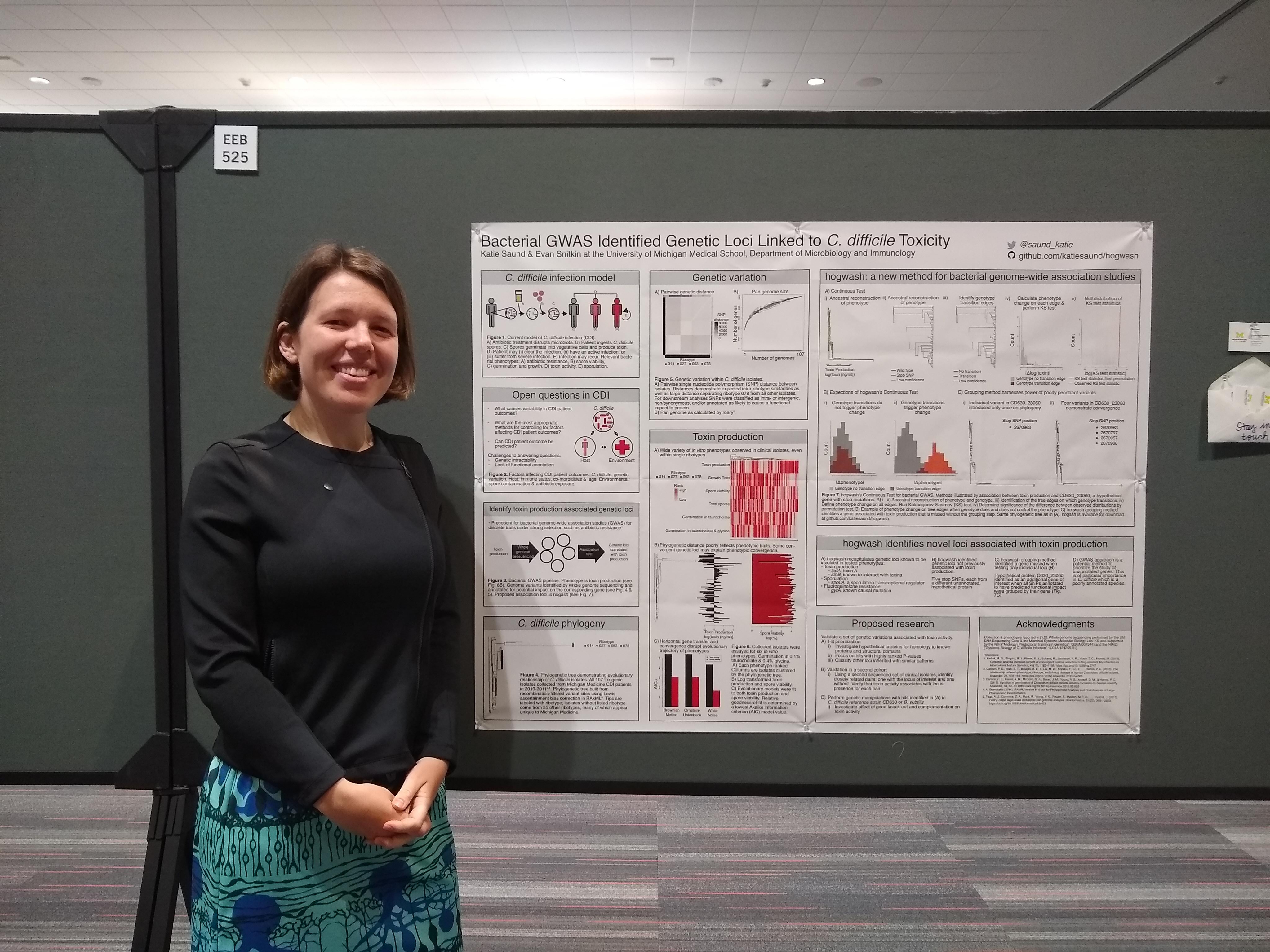
Presenting your research at a poster session is a learned skilled. If you find it hard the first time don’t panic, you just need some practice and a little help. I used to get a stomach ache just thinking about presenting at a poster session. Now I look forward to them and leave more energized about my research. Here are the steps I took to improve my poster session experience.
Find the best conference you can.
The most proactive step you can take to have an enjoyable poster session is to take the time to choose the best conference for you, your research topic, and your goals. The best conference for you will have many attendees with research interests similar to yours. A small, niche conference in your subfield may have more researchers in your area (meaning more traffic to your poster) than an amorphous, mega-sized conference.
Customize your conversation to the other person’s interests.
It is a waste of time to use the same research pitch on every visitor to your poster. Take the first minute to introduce yourself and to get to know the person who has stopped by your poster. Specifically, ask what interest the person has in your poster.
- “What brings you by?”
- “What are you particularly interested in?”
Ask about their level of background knowledge.
- “Do you also study C. difficile genomics?”
- “How closely related is your own research?”
These questions yield higher quality discussions. The answers to these questions let you save time by avoiding background explanations when chatting with a subject area expert or to avoid bogging down the conversation with jargon to someone new to the field.
Bring a notepad and paper.
- Jot down suggestions. I’ve been given great ideas for methods to apply to my projects by helpful poster visitors and have been glad to have pen/paper to write on. Sure, I could just tap ideas into my phone, but that can look rude. More practically, it’s extremely annoying to deal with my phone autocorrecting biology abbreviations and software package names.
- Collect contact info. You remembered to bring a card, but not everyone will.
- Draw a concept. Drawing a concept can quickly eliminate confusion that may arise in a conversation with someone from a different research background or when your conversations isn’t getting anywhere. If you look around during the poster session you’ll see lots of scientists gesturing animatedly about their research with their hands. Explaining with your hands can work, but sometimes a piece of paper is the best tool for the job.
Pin some business cards to your board.
People will want to get in touch. Yes, business cards are an expense that not everyone’s work will cover, but they make staying in touch with your new buddies much easier.
If you need accommodations plan for that ahead of time.
Perhaps a chair to sit in is a necessity; ask to have one at your poster board prior to the start of the session so you don’t lose precious discussion time. You are the expert on what you need to succeed.
Have a bottle of water.
Ideally you’ll be chatting a lot so you’ll need some water. Also, if you’re nervous it’s something inconspicuous to fidget with. If traffic to your poster slows down or you just need a minute to yourself to recharge (where are my fellow introverts at?!) you can take a break to refill the bottle.
Ask someone to take a photo of you with your poster.
It’s the perfect accomplishment to tweet about and a memory to include in your thesis defense slide deck.
Freshen up prior to the session.
Take a look in the mirror, brush your hair & teeth. Check for stains on your slacks or spinach in your teeth. You’re probably fine, but it’s better to be confident.
Have a snack in your pocket.
Do not risk getting hangry with the curious scientists who want to meet you. If you feel hunger pangs gobble down a quick bite to boost your spirits.
Hang your poster relatively low.
At the risk of generalizing: you can make your poster accessible to more readers if you hang it lower rather than higher (people shorter than you, people using wheelchairs, stools, or scooters, etc…).
Interacting with the people at the posters next to yours? Be kind, but don’t hog their time.
I introduce myself to my poster neighbors as soon as I get to my poster board. I ask them for a quick summary of their project and how their conference experience has been. Some people feel it’s an imposition to ask the people near you to explain their research, which seems odd to me, but keep this in mind. I like to pass the time by chatting with the researchers near me because they’re likely to have similar research interests and be wonderful (I work in a great field)! While we’re chatting I have an eye out for people interested in my poster and keep a smile on my face.
Invite people to your poster
Always be selling. Invite people to your poster session. Be specific. Tell them the time and poster number. If you’ve met someone with similar research interests you’re doing them a favor by inviting them; remember, people are at a conference to learn science and meet people!
Good luck at your upcoming poster session!
If you’re feeling anxious about presenting your poster read my essay on Strategies to Address Poster Session Fears.